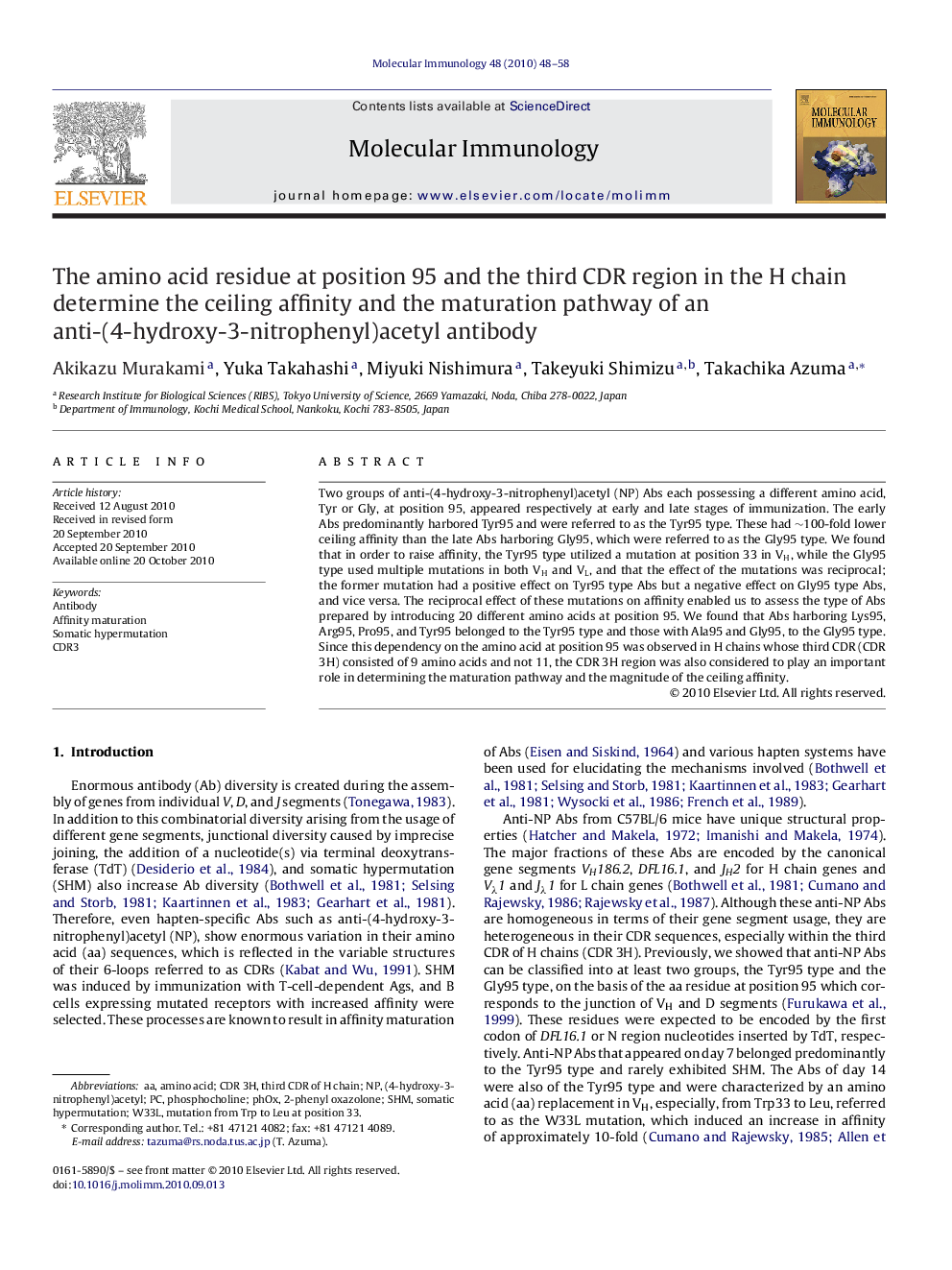| Article ID | Journal | Published Year | Pages | File Type |
|---|---|---|---|---|
| 2831994 | Molecular Immunology | 2010 | 11 Pages |
Two groups of anti-(4-hydroxy-3-nitrophenyl)acetyl (NP) Abs each possessing a different amino acid, Tyr or Gly, at position 95, appeared respectively at early and late stages of immunization. The early Abs predominantly harbored Tyr95 and were referred to as the Tyr95 type. These had ∼100-fold lower ceiling affinity than the late Abs harboring Gly95, which were referred to as the Gly95 type. We found that in order to raise affinity, the Tyr95 type utilized a mutation at position 33 in VH, while the Gly95 type used multiple mutations in both VH and VL, and that the effect of the mutations was reciprocal; the former mutation had a positive effect on Tyr95 type Abs but a negative effect on Gly95 type Abs, and vice versa. The reciprocal effect of these mutations on affinity enabled us to assess the type of Abs prepared by introducing 20 different amino acids at position 95. We found that Abs harboring Lys95, Arg95, Pro95, and Tyr95 belonged to the Tyr95 type and those with Ala95 and Gly95, to the Gly95 type. Since this dependency on the amino acid at position 95 was observed in H chains whose third CDR (CDR 3H) consisted of 9 amino acids and not 11, the CDR 3H region was also considered to play an important role in determining the maturation pathway and the magnitude of the ceiling affinity.
